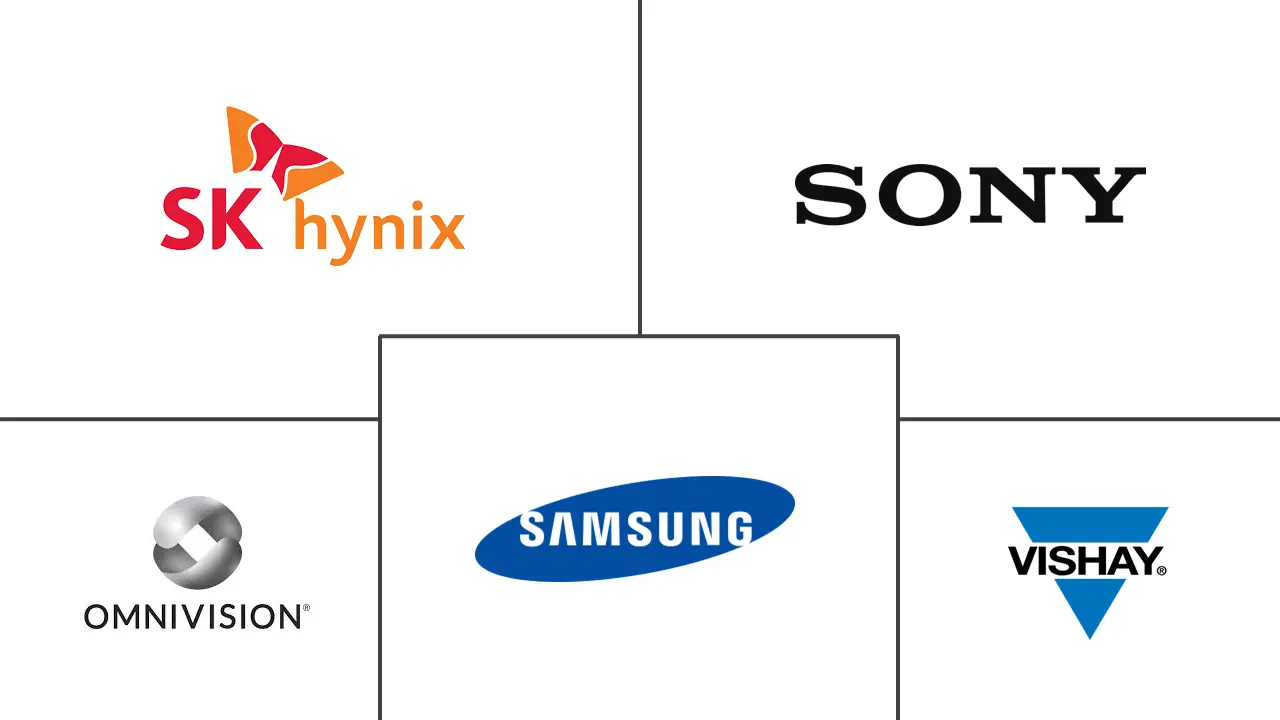Market Size of Consumer Electronics Optoelectronics Industry

| Study Period | 2019 - 2029 |
| Base Year For Estimation | 2023 |
| Market Size (2024) | USD 16.89 Billion |
| Market Size (2029) | USD 21.30 Billion |
| CAGR (2024 - 2029) | 4.70 % |
| Market Concentration | Low |
Major Players
*Disclaimer: Major Players sorted in no particular order |
Consumer Electronics Optoelectronics Market Analysis
The Consumer Electronics Optoelectronics Market size is estimated at USD 16.89 billion in 2024, and is expected to reach USD 21.30 billion by 2029, growing at a CAGR of 4.70% during the forecast period (2024-2029).
- The global consumer electronics market is poised for growth, largely propelled by the widespread adoption of smartphones. Factors such as technological advancements, the rollout of 5G, and a culture of innovation are set to boost this demand further. As technology continues to advance at a significant pace, the demand for more efficient, powerful, and compact optoelectronics increases. Innovations such as 5G connectivity, the Internet of Things (IoT), and artificial intelligence (AI) require advanced semiconductor devices to support their functionality, driving the market forward.
- Most consumer electronics, including laptops, mobile phones, game consoles, microwaves, and refrigerators, operate with optoelectronics such as LEDs, image sensors, photovoltaic cells, and laser diodes. The high demand for these devices is a vital factor encouraging the growth of the market.
- Moreover, several smartphone manufacturers focus on launching technologically advanced smartphones to gain a competitive edge, further driving market growth. For instance, in April 2024, Redmi unveiled a new version of the Redmi Note 13 Pro+ 5G. This unique phone edition is referred to as the Redmi Note 13 Pro+ 5G World Champions Edition or the AFA Edition in India. The Redmi Note 13 Pro+ 5G runs on a MediaTek Dimensity7200-Ultra SoC paired with a maximum of 12 GB RAM and 512 GB storage.
- In recent years, LED televisions have gained significant traction among consumers owing to their power-saving features. LED TVs, utilizing light-emitting diodes (LED) for backlighting, boast superior energy efficiency. In contrast, the majority of LCD TVs rely on cold cathode fluorescent lamps (CCFL), leading to a notable disparity in power consumption. This variance translates to potential power savings of around 30%.
- Supply chain disruptions restrict semiconductor devices, including optoelectronics mass production. Geopolitical conflicts have further disrupted the semiconductor supply chain, impacting the global supply chain and hampering the production of consumer electronics. Further, in 2024, the Israel-Hamas conflict is expected to cause further disruption to the worldwide semiconductor supply chain.
- Rising inflation rates are driving up the costs of goods and services, notably consumer electronics. These elevated costs erode purchasing power for consumers and businesses, consequently restricting market growth. The war between Russia and Ukraine, high energy costs, and stricter emissions standards have been noted as the primary reasons for the continued shortage of raw materials such as copper, which are expected to hamper the production process of optoelectronics.

